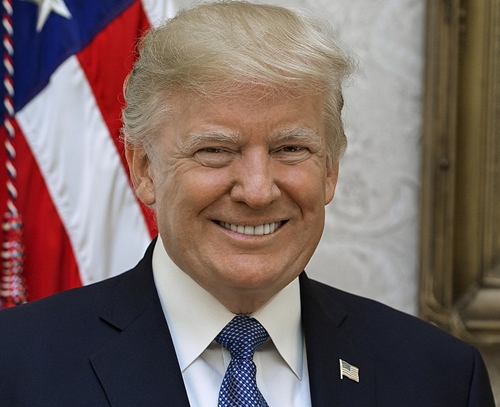US President Donald Trump called for Apple to pull out its manufacturing facilities in China and shift all production to the US to avoid the consequences of an escalating trade war with Beijing.
The US President has been calling on US companies to move production bases from China to the United States, while pushing aggressive trade actions aimed at narrowing US trade deficit.
“Apple prices may increase because of the massive tariffs we may be imposing on China – but there is an easy solution where there would be ZERO tax, and indeed a tax incentive,” Trump tweeted.
“Make your products in the United States instead of China. Start building new plants now. Exciting!” But the higher cost of wages in the United States could offset the benefits Apple might gain by avoiding tariffs affecting its products manufactured in China.
Apple Inc said a “wide range” of its products would be hit by the tariffs, but not its iPhone. It said in a late submission that its AirPods headphones, some of Apple’s Beats headphones, and its new HomePod smart speaker would face levies, causing its shares to slip in late trading.
“Our concern with these tariffs is that the US will be hardest hit, and that will result in lower US growth and competitiveness and higher prices for US consumers,” Apple said in the letter.
Trump on Friday also warned he was ready to slap tariffs on virtually all of Chinese imports into the United States, threatening duties on the remaining $267 billion of goods on top of the $200 billion set for tariff action in coming days.
Trump was addressing the media hours after a public comment period on his $200 billion China tariff list closed on Friday.
The US Trade Representative’s office received nearly 6,000 comments and held seven days of public hearings on the proposed levies.
Most comments were from companies seeking to remove products from the tariff list, arguing there were few, if any alternative sources and the duties would cause financial hardship. Only a few supported the tariffs.
China has threatened retaliation, which could include action against US companies operating there.
Speaking to reporters aboard Air Force One, Trump said he was “being strong on China because I have to be.”
“The $200 billion we are talking about could take place very soon depending on what happens with them. To a certain extent it’s going to be up to China,” Trump said. “And I hate to say this, but behind that is another $267 billion ready to go on short notice if I want. That totally changes the equation.”
Trump has already imposed 25 per cent tariffs on $50 billion worth of Chinese goods, mostly industrial machinery and intermediate electronics parts, including semiconductors.
The $200 billion list, which includes some consumer products such as cameras and recording devices, luggage, handbags, tires and vacuum cleaners, would be subject to tariffs of 10 per cent to 25 per cent.
Cell phones, the biggest US import from China, have so far been spared, but would be engulfed if Trump activates the $267 billion tariff list.
However, 2018 imports from China through July were up nearly 9 per cent over the same period of 2017, according to US Census Bureau data.
Retailers had successfully kept high-profile consumer electronics such as cell phones and television sets off of previous tariff lists. But David French, top lobbyist for the National Retail Federation, whose members include Amazon.com, BJ’s Wholesale Club and Macy’s, said nearly every consumer good could be affected if Trump follows through on all threatened tariffs.
“The Chinese aren’t paying these tariffs, American families are going to pay these tariffs. These are taxes and they’re going to find their way into the pocket book of folks around the country,” French said.
Kudlow, who heads the National Economic Council, told CNBC the administration was still talking with China about trade issues but so far China had not met US requests.
The United States has demanded that China better protect American intellectual property, cut its US trade surplus, allow US companies greater access to its markets and roll back its high-technology industrial subsidy programmes.
“We are still talking with China on a number of issues ... Those talks will continue to go on. We want lower (trade) barriers across the board,” Kudlow said.






















